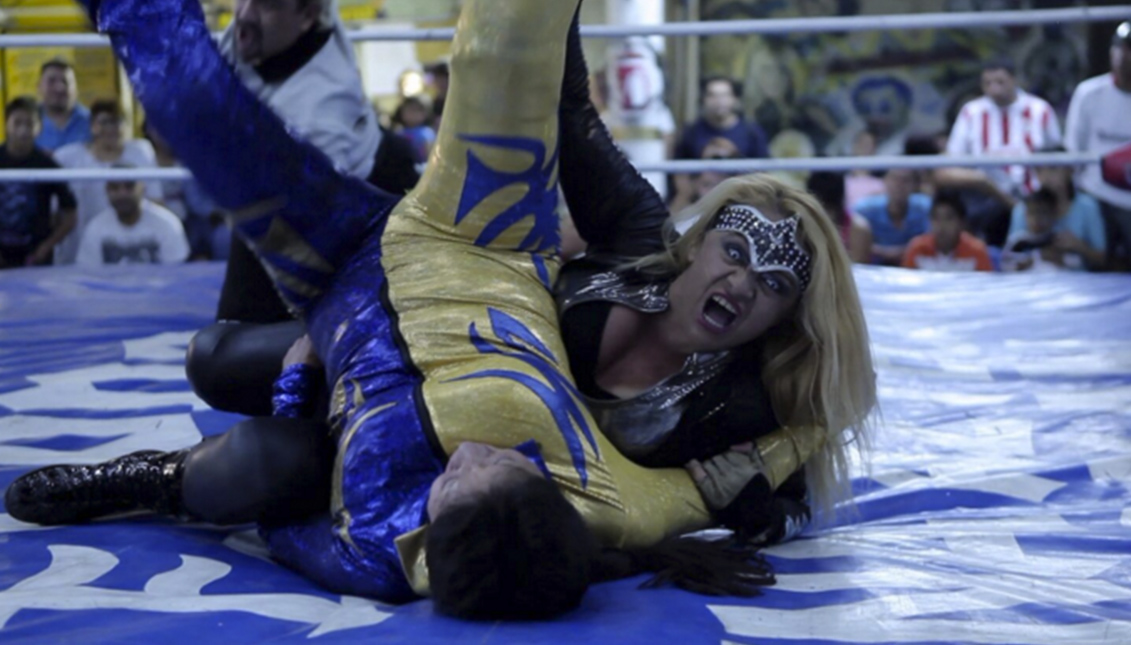
The female wrestler who teaches the Japanese to become a "suicide in the ring"
The Mexican town of Neza has become for many in Japan, the capital of Mexican wrestling. Everyone comes looking for Esther Moreno's Aztec arena.
"Being a suicide in the ring won me the right to be in that great country, with those great people who have brought the best of the world," said Mexican Esther Moreno in Arigato Neza, a documentary by Ana Alvarez that investigates wrestling in Mexico and Japan.
Moreno lived in the Japan for 15 years and became a professional wrestling celebrity. A pioneer in both Japanese and Mexican wrestling, she brought to Japan the somersaults with which she always begins and ends her fights and also brought back some Eastern fighting techniques.
When she returned to Neza, the Mexican city whose Nahuatl name honors the "fasting coyote," she opened an Aztec arena with her family and started receiving Japanese wrestlers like Yuichi Tahra, who traveled with the intention of learning all the keys to the famous Mexican style of wrestling.
Now, there are many strong Japanese men and women who come to be put on the ropes by Moreno, show off and be cheered on by Neza's neighbours, who are used to a very fashionable concept nowadays: "transculturalism."
"It's interesting to show how a place that is perceived as peripheral [Nezahualcóyotl, Estado de México] becomes a cultural center, based on the sport of wrestling; I also wanted to show the participation of women in a sphere dominated by men and thus show inspiring life stories," filmmaker Ana Álvarez, who began working on this documentary in 2014 as a result of a project by the Mexican Film Institute (Imcine), told Portal.
RELATED CONTENT
"I wanted to appeal to our connections with other parts of the world and offer an outward look to bring us closer to each other and show that we share a very close thing like wrestling," added the artist, whose side-by-side narrative, that of Yuichi and Moreno, also shows how Mexico City's outlying areas have become spaces for cultural exchange.
In the 45 years that the Moreno family's Aztec Budokan arena has been operating, the ring has not only been a symbol of coexistence and cultural crossbreeding in Neza, but also allowed the wrestling styles of both countries to be known, just as the wrestler did when she first arrived in Japan and began to learn the techniques to later export them to Mexico.
According to Alvarez, "[the arena] becomes a center for entertainment, but also for the articulation of community culture and important knowledge because Japanese wrestlers come to learn the Mexican style; in addition, the arena speaks to people from different places."
The struggle, with its rituals and theatrical performances, is a metaphor for the similarities between two countries that seem so culturally distant, a kind of mestizo that Álvarez has worked on in other of his works, where he addresses the Mazahua community and its relationship with punk, or portraying the clichés of the city and daily life.
Arigato Reza can be seen on the platform of "Contigo en la distancia: Movimiento de Arte en Casa," promoted by the Mexican Ministry of Culture.











LEAVE A COMMENT:
Join the discussion! Leave a comment.